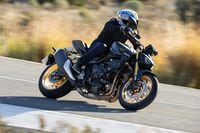"Keyword: Evolution" says Akinori Hirano, project leader of the 2017 Yamaha YZF-R6, during the technical briefing of the new motorcycle. "This evolution will take the bike to the next level."Hirano's words are spoken with passion. Enough that, without having yet ridden the motorcycle, you start to believe his point. Over and over again throughout the briefing, it's stressed more. Evolution. This isn't an all-new motorcycle, but the next step in the R6's bloodline. One that will improve an already great motorcycle.
So what is new? The 2017 R6 gets a makeover, and now closely resembles its R1 big brother, although there was more purpose to it than just styling. Yamaha claims that changing the fairing significantly improved the bike's aerodynamics by 8 percent when compared to its predecessor, also resulting in a slightly faster top speed. The fairing goes on to feature a reshaped central ram-air intake and a full LED lighting system including LED turn signals incorporated into the bike's rear view mirrors. An aluminum fuel tank (which sheds 2.4 pounds in comparison to the previous unit) paired with a revised seat results in an improved riding position with more room to move.
The entire front end also gets swapped. Yamaha’s development team swapped the outgoing 41mm forks for updated 43mm KYB units with a 32mm damper cartridge (versus a 20mm cartridge on the outgoing model) and more travel (120mm instead of 115mm) to improve rigidity and increase front end feel— the front axle size was also increased from 22mm to 25mm for the same reason. Initial findings, however, proved that the changes made the R6 too stiff, so the size of the lower triple clamp’s cross section was decreased by 7mm for the optimal amount of rigidity. Complementing the changes to the front end is a new KYB rear shock with a threaded-type preload adjuster for more accurate tuning.
New, larger 320mm front brake discs bolstered by new ADVICS four-piston brake calipers headline the R6’s improved stopping power. The goal wasn’t just about getting more power though; engineers swapped the Brembo master cylinder on the outgoing model for a Nissin piece to improve feel through the brake lever. ABS also comes standard on the new R6 and cannot be disabled.
And while the motorcycle’s powerplant remains untouched, the electronics package has been brought up to speed with an all-new six level traction control system. The system takes data from front and rear wheelspeed sensors and instantly adjusts ignition timing, fuel volume, and throttle plate position to properly manage traction without creating an unnatural feel for the rider. Yamaha’s D-Mode System is also added to the new R6, providing the rider three different throttle response maps (A, B, and Standard) to choose from based on preference or riding conditions. An accessory plug-and-play quickshifter unit is also available for $199.99.
First Ride Impression I've got a confession to make. Even after hearing the words "evolution" and "next level" during Yamaha's official introduction for the 2017 R6, I still had a hard time believing the bike would be that much better. On paper, the bike doesn't appear to be all that new, or updated enough to set the world on fire. But after just a few laps circulating Thunderhill Raceway Park, I have something else to admit: And that is—wait for it—I was wrong. With this update, Yamaha really has taken a fantastic platform and made it significantly better. Forget what you think this bike is in comparison to it's predecessor, because it's far more than that.
Throw a leg over the 2017 Yamaha R6 and the first thing you'll notice is how much more homey, relaxed feeling the riding position is than before. The updated shape of the fuel tank and revised seat (5mm narrower and 5mm higher at the front lip) allows you to sit inside the motorcycle and become one with the chassis, instead of feeling like you're sitting on top of the front end. The reshaped, larger fairing adds to the feeling, and provides enough wind protection to eliminate almost all the wind noise as you tuck behind the bubble and let the engine loose down the straightaway.
The R6 is still a screamer on the straightaways. In fact, the engine hasn't changed. It still demands to be ridden above 9,000 rpm—as most all of the current inline-four 600s do—but it's certainly rewarding if you keep it above that threshold. Honestly, this is not the most versatile engine for street riding, and I'd have liked to have seen some tweaks broaden the powerband out. Regardless, it's still hugely capable on the track, and will outpower nearly all of its competitors. In the Standard D-Mode setting power delivery is smooth—maybe even borderline mellow as initial power is put to the ground and the tachometer needle climbs through the rpm range, which results in confidence to fully open the throttle sooner, also equaling more cornerspeed.
The confidence to twist the throttle and carry more cornerspeed can be chalked up to two different things. One, the addition of a traction control system to the 2017 R6. And two, the bettered handling of the motorcycle's new front end. We'll start with the first. Yamaha didn't add TC just because it could. It did so to help the rider achiever quicker lap times by managing traction and tire wear. The system hits its goal spot on. I settled on level 3 (there are 6, plus off) and couldn't be more impressed with the system's ability to just slightly cut power and keep the wheels in line while continuing to drive forward off the corner. It's not over complicated or over intrusive, just plain ol' good. Faster lap times? Heck yes.
Personally, I think it's funny that the Internet was in an uproar at the news of an addition of a TC, saying that there's no need for such a rider aid on 600s. Yes, it's maybe not quite as critical to have as it would be on a 200 horsepower literbike, but it does positively affect the rideability and lap times of the motorcycle. Besides, there's a reason why all the factory-backed 600 racebikes use TC systems of their own, right?
Another interesting thing is that, despite engineers having not touched the frame or swingarm, this latest R6 has better feel and feedback mid-corner thanks to the thicker 43mm KYB front forks and larger 25mm front axle adopted from the R1. Under hard braking and even at full lean, feedback through the contact patch of the front tire is nearly flawless, providing the rider a great sense of what the bike is doing, which generates all that confidence. Grip at both ends has improved as well, putting the bike almost quite literally on rails. Look where you want to go, and the bike's going to go there. The updates to the front end really are more than meets the eye.
Add to all this the extra stopping power of the ADVICS four-piston brake calipers and 330 millimeter discs, plus extra feel through the lever from the Nissin master cylinder and the R6 is an out of the box beast of a track bike. It might just be the best handling 600 ever produced.
Final Thoughts It was all smiles after riding the 2017 R6. Yamaha has taken one of its most famous supersport platforms, tweaked it with the knowledge and resources it has gained from other models, and delivered a motorcycle that I think will be enough to help rekindle the people's love for the middleweight supersport class. It may not be the most powerful motorcycle on the market, but it's sure as hell one of the most fun. A perfect track weapon, and probably a great dance partner on a twisting canyon road, too.










/cloudfront-us-east-1.images.arcpublishing.com/octane/WGDFYGT66T4BXG2G4XZEVCJITE.jpg)
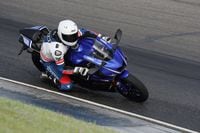

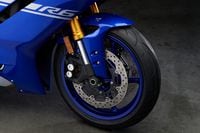
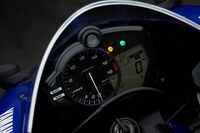
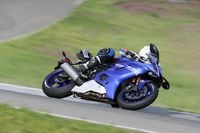
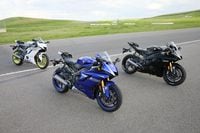
/cloudfront-us-east-1.images.arcpublishing.com/octane/OKWOJWAKP5EP3OACCRRWPCIX2Q.jpg)
/cloudfront-us-east-1.images.arcpublishing.com/octane/2WF3SCE3NFBQXLDNJM7KMXA45E.jpg)
/cloudfront-us-east-1.images.arcpublishing.com/octane/G4MG6OUCJNBSHIS2MVVOTPX65E.jpg)
/cloudfront-us-east-1.images.arcpublishing.com/octane/IIGGWFOTOJGB7DB6DGBXCCMTDY.jpg)
/cloudfront-us-east-1.images.arcpublishing.com/octane/QSTCM6AVEZA5JJBUXNIQ3DSOF4.jpg)
/cloudfront-us-east-1.images.arcpublishing.com/octane/U4I7G625B5DMLF2DVIJDFZVV6M.jpg)
/cloudfront-us-east-1.images.arcpublishing.com/octane/B6XD6LS6IVCQPIU6HXDJSM3FHY.jpg)
/cloudfront-us-east-1.images.arcpublishing.com/octane/ICL63FEDDRDTTMINYICCEYGMDA.jpg)
/cloudfront-us-east-1.images.arcpublishing.com/octane/FCGZHQXRBZFLBAPC5SDIQLVF4I.jpg)
/cloudfront-us-east-1.images.arcpublishing.com/octane/WNOB6LDOIFFHJKPSVIWDYUGOPM.jpg)

/cloudfront-us-east-1.images.arcpublishing.com/octane/X33NU3E525ECRHXLNUJN2FTRKI.jpg)
/cloudfront-us-east-1.images.arcpublishing.com/octane/6KKT5NNL2JAVBOXMZYS5ZO76YA.jpg)
/cloudfront-us-east-1.images.arcpublishing.com/octane/J5RKG5O455GMPGQRF2OG6LRT7A.jpg)
/cloudfront-us-east-1.images.arcpublishing.com/octane/GX2CIZKQVRH2TATDM26KFG2DAE.jpg)
/cloudfront-us-east-1.images.arcpublishing.com/octane/ZWIDYSAKQZHD5BHREMQILXJCGM.jpg)
/cloudfront-us-east-1.images.arcpublishing.com/octane/CYUHJZCTSJCH3MRAQEIKXK7SCQ.jpg)
/cloudfront-us-east-1.images.arcpublishing.com/octane/LKOFINY56FCXJCANJ5M7ZDQUBY.jpg)
/cloudfront-us-east-1.images.arcpublishing.com/octane/4NBPDACMWJH63JQYJVK3QRBDZI.jpg)
/cloudfront-us-east-1.images.arcpublishing.com/octane/KKHQHRR3FJGX7H2IPU6RALMWG4.jpg)

/cloudfront-us-east-1.images.arcpublishing.com/octane/5IOFS5JAE5FOXMNA23ZRAVVYUU.jpg)
/cloudfront-us-east-1.images.arcpublishing.com/octane/CGXQ3O2VVJF7PGTYR3QICTLDLM.jpg)
